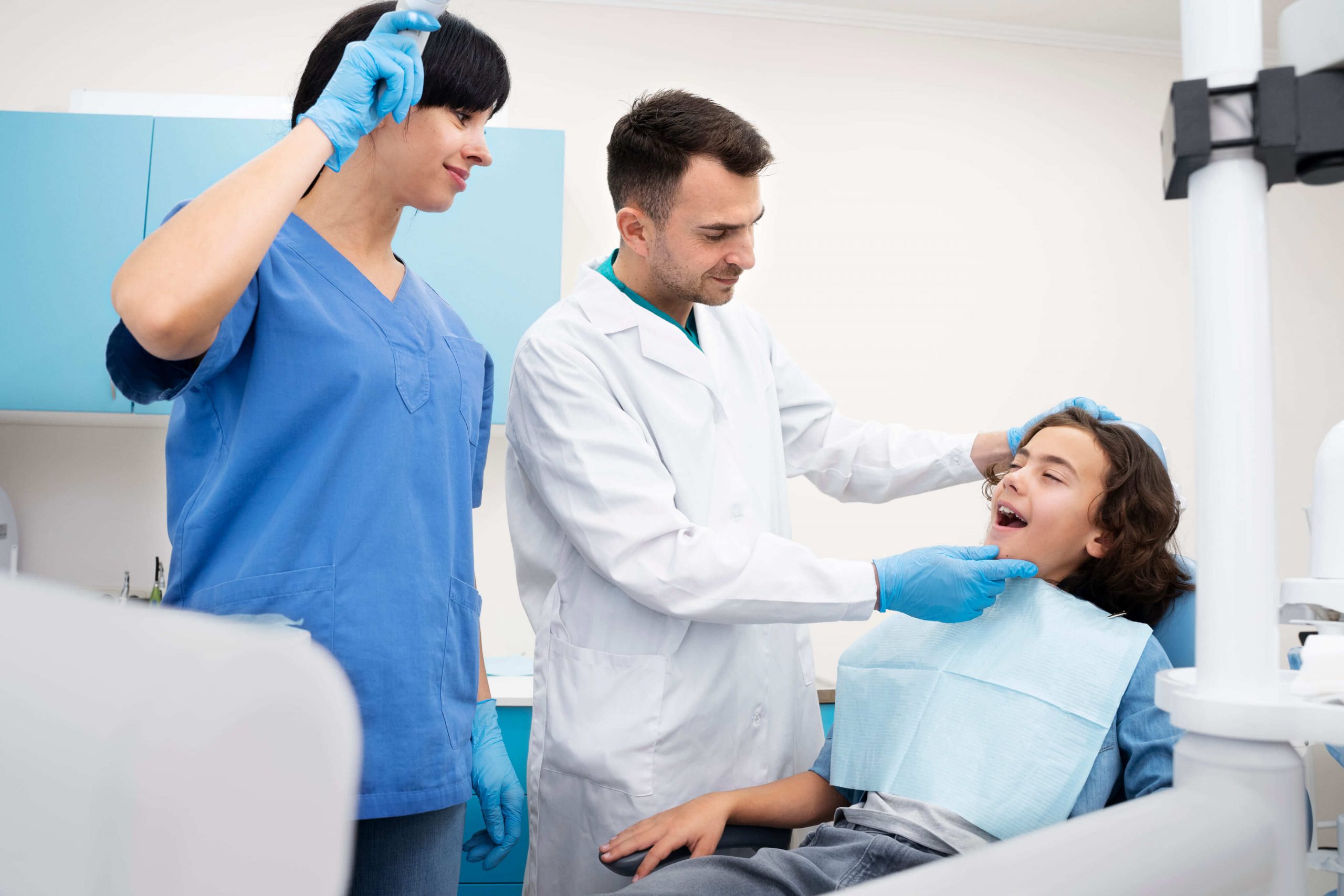
Dentists are in a unique position to do a lot of good for patients who suffer from obstructive sleep apnea. The Vivos and Homeoblock appliances are two examples of sleep apnea mouth guards that can cure sleep apnea and bruxism. The oral appliances slowly increase the size of the mouth and nasal passageways. An increase in space naturally resolves airway obstruction and resistance issues. More space allows for the tongue to fit properly in the mouth rather than being displaced into the throat where it blocks airflow during sleep.
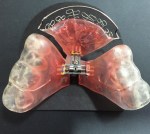
DNA appliance image
Myofunctional Therapy and Breathing Exercises
People will also be asked to perform tongue and breathing exercises to strengthen the muscle tissue in the mouth and throat, so they are strong and do not collapse so easily. This form of physical therapy is called myofunctional therapy. Breathing exercises will increase the strength of the muscles in the throat referred to as the infrahyoid and suprahyoid muscles. Other breathing exercises will focus on restoring proper nasal breathing and preventing mouth breathing during sleep.
Mandibular Advancement Sleep Apnea Mouth Guard
Another sleep apnea oral appliance is referred to as a “mandibular repositioning appliance.” Quite literally the device forces the lower jaw to bite into a more forward bite position and it holds the mouth open. It is a management appliance that needs to be worn every night indefinitely. It does not change the jaw structure, but rather it braces the jaws into a more open and forward position, so the airway is more open. It is kind of like a chin thrust position during CPR, but all night long forever. Some people cannot tolerate this position and over time, teeth can move and the bite can go bad. One advantage of the mandibular oral appliance is that iit can be fitted quickly and does not require any myofunctional exercises.
Dr. Adams
Contact Dr. Adams for an appliance consultation
Dr Adams treats and can improve the lives of people with sleep apnea and TMJ pain. “My goal is to improve the overall health of my patients by optimizing the spaces for airflow through the mouth and assisting people who are living with treatments such as CPAP forever.” Schedule a consultation and I will show you what our treatments can do for you. Treating this problem can literally save years of valuable life.

dr gary adams
How Do Sleep Apnea Oral Devices Work?
Dr Adams’ favorite appliance for sleep problems and TMJ is the Vivos DNA Appliance. Other adult growth appliances exist including the Homeoblock and ALF devices. The therapy naturally increases the size of the spaces in the mouth. And improves airflow through the mouth and to the airway. The devices also gets the tongue further away from the throat and airway. Increasing the size of the mouth and improving airflow to the upper airway can create more room for oxygen flow to your lungs during sleep. Additionally with a larger mouth and better airflow to the upper airway, large obstructing structures such as the tongue, tonsils and palatal tissues are less like to fall into the throat and shut down airflow to the airway. Dentists are in a unique position to offer corrective oral appliances where in contrast, many other therapies, such as CPAP, only manage the disease.
Who Can Treat Sleep Apnea?
Dentist do not diagnose sleep apnea. Seeing a dentist for treatment with any oral appliance is not a substitute for being examined and diagnosed by a sleep apnea physician. Many health problems are linked to sleep apnea such as heart, kidney, and thyroid disease. Dentists do not diagnose or treat any of these diseases. Sleep apnea can involve problems with the central nervous system and collapse of the tissues in the airway. Diagnosing sleep apnea involves:
- Oximetry. A home test that if failed will lead to more testing.
- Polysomnogram. Or an overnight sleep evaluation. This test looks at brain activity, breathing, snoring, oxygen levels, heart rate and muscle activity during sleep.
- Electrocardiogram. Tests how the heart is performing while kids are sleeping
Sleep Apnea is Link to Many Medical Problems:
- High Blood Pressure
- Heart Disease
- TMJ
- Metabolic disease
- Thyroid Disease
- Reflux or GERD
- Anxiety
- Diabetes
- Obesity
- Depression
What is Sleep Disordered Breathing?
Snoring is an alarm and your body sounding off that there is a breathing and airway problem. Whey you are snoring you are literally choking on soft tissue that has collapsed into your airway during sleep. Quite literally what happens is the tongue, tonsils and other tissue settle into your wind pipe or airway and get in the way of you getting enough oxygen while you sleep. It’s almost suffocating to think about. Sadly it is a common phenomenon in roughly 100 million Americans. The truth of the matter is most people who snore have a serious condition called obstructive sleep apnea (OSA).
What is Sleep Apnea Really?
People who have obstructive sleep apnea or OSA stop breathing for 10 seconds or more at a time. For some people this can happen hundreds of times per night. To start breathing again, the individual will usually clench their teeth, causing them to partially awaken, when the obstructions (tongue etc) can be removed. Most people do not realize these things are going on till the problem gets really bad because they are asleep. Once the condition gets really bad, there will usually be complaints about jaw pain, TMJ, headaches and poor sleep. Sadly most of the time this condition escapes diagnosis as it slowly kills you like high blood pressure. OSA is a very insidious disease.
Pediatric Sleep Apnea is Corrected with Expanders
Dr. Adams uses many different expanders for kids to treat OSA, crooked teeth and mouth breathing. Early diagnosis and treatment is critical for kids to prevent growth and developmental problems that last a lifetime. Dr. Adams’ favorite appliances for kids are:
- ALF Appliance
- Schwarz Expander
- Twin Block
- Myo Brace
- Crozat Device
Pediatric Sleep Apnea Symptoms
- Poor development
- Attention Deficit and ADHD like problems
- Behavioral Issues
- Academic under performance
- Late Bed Wetting
General Sleep Apnea Symptoms:
- Loud snoring
- Severe Daytime Tiredness
- Irregular night time breathing (Gasping, Choking, Reflux)
- Restless Sleep
- Scalloped Tongue
- Small Mouth
- Orthodontic Problems
- Difficulty Swallowing
- Difficulty concentrating
- Irritability
- Morning Headaches
- Dry Mouth and throat
- TMJ-TMD Symptoms
- Restless Leg Syndrome
How Do Sleep Doctors Diagnose OSA
The best way to diagnose sleep apnea is with an overnight sleep study called a polysomnogram, which is either performed in a sleep clinic or at home. The study will measure a few things such as breathing, quality of sleep, oxygen levels in your blood, heart rate, and body movements. Often people who have airway issues have cracked and missing teeth.
How to Naturally help Sleep Apnea:
- Sleep on your side
- Strengthen your airway and breathing muscles with exercises such as yoga “fire breathing.”
- Lose weight to reduce your BMI
- Perform some tongue exercises aka myotherapy
- Quit smoking
- Regular exercising
- Avoid caffeine, late meals and becoming over-tired which causes deep sleep.
What Anatomical Structures in the Mouth Obstruct Breathing
Tongue Normally Appears:
- Smooth Borders
- Wide Range of Tongue motion forward and side-to-side
- Light red color
- Soft smooth and not bumpy
- Light glossy white coating
Sleep Apnea Tongue
- Rough scalloped edges
- Red and inflamed spots on the edges
- Lumpy, bumpy, rough areas
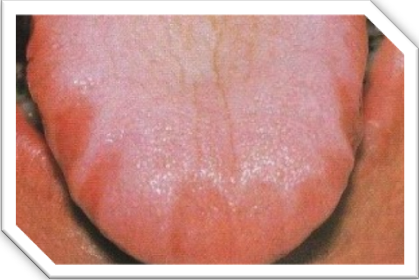
tongue 21
Scalloped Tongue
Scalloping of the tongue is caused by the tongue being squished up against the teeth. The Scalloping is due to the lower jaw being too small for the tongue to fit. The best way to correct obstructive sleep apnea is to literally correct the obstructions.
High Tongue Position
When there is little space between the teeth, the tongue takes a higher position in the mouth, moving closer to the tonsils and palatal tissues.

Tongue position1
A high under-developed palate.
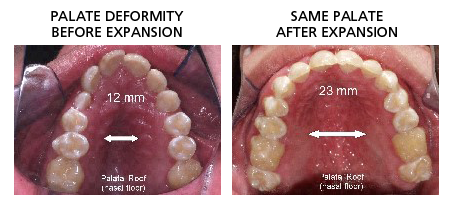
Long Soft Palate
A long soft palate can sag and flop down on the tongue. It’s not too hard to see the obstruction here. Imagine creating more room in the mouth for this tongue to sit down properly. No doubt that would create more room for air to get past the tongue and soft palatal jam here. these are problems a dentist is in a unique position to fix without surgery.
Enlarged Tonsils
When tonsils are large (arrows) they obstruct breathing or the passage of air between the lungs and the mouth and nasal passageways.
Deviated Septum

Large Turbinates
Enlarged turbinates can obstruct air flow during nose breathing.
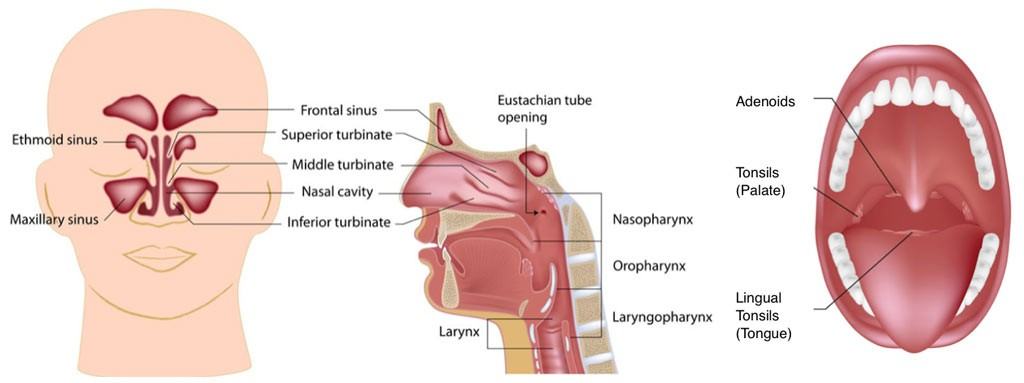
sleep apnea airway anatomy
Undersized Mandible or Retrognathic Lower Jaw:
The smaller and further back your lower jaw is the closer your tongue is to your airway and more likely it is that your tongue will fall back into your throat during sleep.
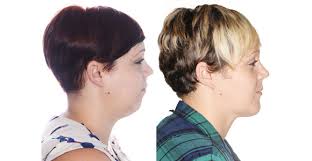
retrognathicmandibleprofile
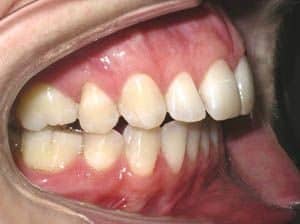

 (301) 421 1996
(301) 421 1996 burtonsvillesmiles@gmail.com
burtonsvillesmiles@gmail.com